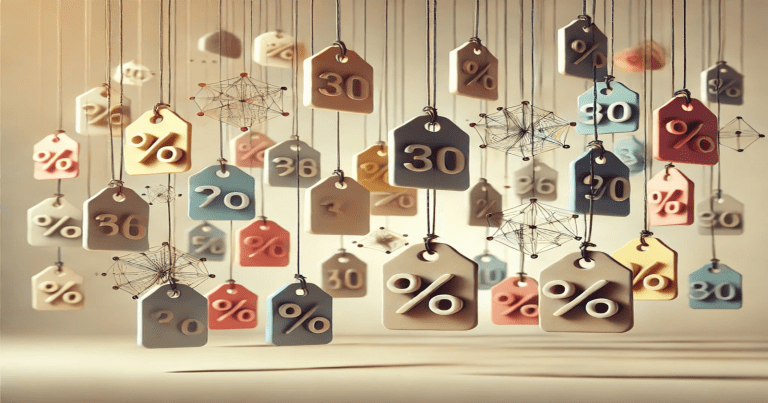A pricing policy is a company’s approach to determining the price at which it offers a good or service to the market. Pricing policies help companies ensure they remain profitable and allow them to price separate products differently. Every business needs a well-formulated pricing policy to determine the best product and service prices. Pricing policy is how businesses price their products and services while considering market conditions, costs, demand, and competition. Companies must set a price at which customers will be enticed or attracted, and profit is made by selling the items.
It keeps a business afloat in an ocean of competition. They should comprise structured pricing strategies along with the organization’s objectives. These strategies include pricing on costs, competitors, customer demand, and the perceived value of a product in customers’ eyes. Businesses also change pricing policies depending on current market conditions and customer expectations.
What is Pricing Policy?
Pricing policy comprises the framework businesses use to determine goods and services prices. Setting a price that allures the customers, takes care of the costs, and maximizes the profits. The various pricing policies depend upon the conditions in the market, competition, demand, and objectives of the company. A company’s pricing policy affects its sales, revenue, and perception of the brand.
Pricing policy is the foundation upon which any business can build consistent pricing decisions without experiencing too many price fluctuations with a profit deficiency. Companies must take a pricing policy that best suits their chosen market position and target audience.
Pricing policies are extremely important for consumers in competitive markets who scour the market for the best-priced items before making any purchase. A well-laid-out pricing strategy provides an edge in the competitive market. Pricing policies can often be the instrument of commercial breakthroughs through introducing new products, clearing out old inventories, and attracting customers. Pricing schemes are also used to determine businesses’ market position as low-cost or high-priced providers.
Pricing Policy Examples
Different industries have different marketing policies. For instance, a supermarket could use discount pricing to draw customers to purchase. In contrast, premium pricing could be used by a high-end brand to create a perception of exclusivity. Businesses also use dynamic pricing, where prices might vary according to demand and, thus, the seasons.
| Pricing Policy | Example | Description |
| Cost-Plus Pricing | A retail store adds a 30% markup to all clothing items. | Ensures cost coverage and a fixed profit margin. |
| Competitive Pricing | A fast-food chain prices its meals the same as its competitors. | It helps businesses stay competitive in a crowded market. |
| Value-Based Pricing | A luxury car brand charges high prices based on brand value. | Focuses on customer perception of quality and exclusivity. |
| Penetration Pricing | A new e-commerce platform initially offers huge discounts. | Attracts customers quickly to gain market share. |
| Skimming Pricing | A new smartphone is launched at a high price and then reduced. | Maximizes profits from early adopters before lowering the price. |
| Psychological Pricing | A product is priced at $9.99 instead of $10.00. | It makes the price appear lower and more attractive. |
| Premium Pricing | A high-end watch brand prices its products significantly higher. | Creates a perception of exclusivity and superior quality. |
| Bundle Pricing | A streaming service offers a package deal for multiple services. | Encourages customers to buy more products at once. |
Methods of Pricing Policy
Business goals, market structure, and customer behavior all contribute to determining the different pricing policies. There are multiple methods that a business might take to fix the correct price. The various methods of pricing include the following:
Cost-plus Pricing
Cost-plus pricing is one of the simplest pricing methods used by businesses. The company calculates the total production costs and then adds a predetermined profit percentage.
Example: If a company produces T-shirts costing 10 dollars, adding 50% on this, it will sell for 15 dollars.
Advantages
- Simple calculation
- Covers all costs
- Ensures profit margin
Competitive Pricing
Competitive pricing is when the establishment quotes its prices as affected by the competitors’ prices. This pricing strategy is best suited for companies in a very competitive market.
Example: In an instance where three smartphone manufacturers produce feature-wise similar products, the prices will be almost identical to entice customers.
Benefits
- Keeps a business competitive
- Gains price-sensitive customers
- Works great in a market where there are several competitors
Value-oriented Pricing
It refers to pricing products based on understanding value rather than the product’s cost. Hence, businesses would be charging customers based on how much they would want to offer for the product. Luxury-priced products and anything “one of a kind” usually fit this category. Example: Apple practices this with its iPhones, as the customers pay a much higher price for the quality and reputation of the company.
Benefits
- Maximizes profits
- Improves brand perception
- Encouraging innovation in products.
Penetration Pricing
The initial price is determined to be low enough to attract customers, and then the price goes up gradually as the brand penetrates the market.
Example: This is typically seen in a new company presenting itself into a market for the first time and offering free samples or charging way less, thereby raising the cost.
Benefits
- Quickly attracts the attention of customers
- Gives an entry strategy to succeed in the highly competitive market
- Creates customer loyalty
Skim Pricing
Skim pricing refers to setting a high price on an emerging new product and lowering the price as time passes. This method has worked quite well with all technology products and innovations.
Example: New gaming consoles become expensive when launched but cheaper over time.
Benefits
- Maximizes the early profits
- Targets customers willing to pay a premium
- Well-suited for high-tech products
Factors Affecting Pricing Policy
The organization’s environment sets several active pricing policies before establishing any pricing. This would be one of the major influences affecting consumer perception and sales volume, leading to any business’s overall success. Prices are not selected haphazardly by companies.
- Cost of Production: Direct costs related to raw materials, labor, and overhead associated with production are indispensable for the price. A business will be able to incur these costs alone and will keep pricing competitively.
- Market Demand: High demand allows a firm to impose higher prices. A fall in demand for the product will compel a firm to lower prices to induce buying behavior.
- Competition: Companies consider price quotes from competitors before pricing their goods. If they charge low prices, their prices must add value, if not be competitive.
- Economic Environment: Pricing is affected by inflation, economic recession, and consumer purchasing ability. Businesses may consider lowering their price bargaining in a downturn to attract more budget-oriented customers.
- Government Intervention: Taxes, tariffs, and price control action on pricing decisions. Certain industries have price limits imposed by governments.
- Brand Positioning: Luxury brands set premium prices to maintain a sense of exclusivity. Budget brands are seen as espousing affordability and competitive pricing.
Pricing Policy FAQs
1. What is transfer pricing policy?
Transfer pricing policy refers to the pricing of goods, services, and assets being transferred between subsidiaries of the same company. The policy helps a multinational corporation in the efficient allocation of costs and profits.
2. What is the Croma Price Match Policy?
Croma assures that if the customer gets a lower price for a product anywhere else, Croma instantly matches that price. This policy builds a guarantee and ensures customer loyalty.
3. How a business choose the best pricing policy?
A business chooses a pricing policy according to market conditions, competition, costs, and customer demand. Businesses often alter their strategies to remain competitive.
4. Can a company adopt multiple pricing policies?
Yes. Businesses often use different pricing strategies for other products or customer segments. For example, penetration pricing for new products and competitive pricing for traditional products.
5. How do pricing policies affect customer behavior?
A pricing policy is well structured; it affects how customers perceive trust and builds trust toward purchasing. Competitive pricing means that price-sensitive clients will come on board, whereas a higher pricing structure will build loyalty toward the brand.


